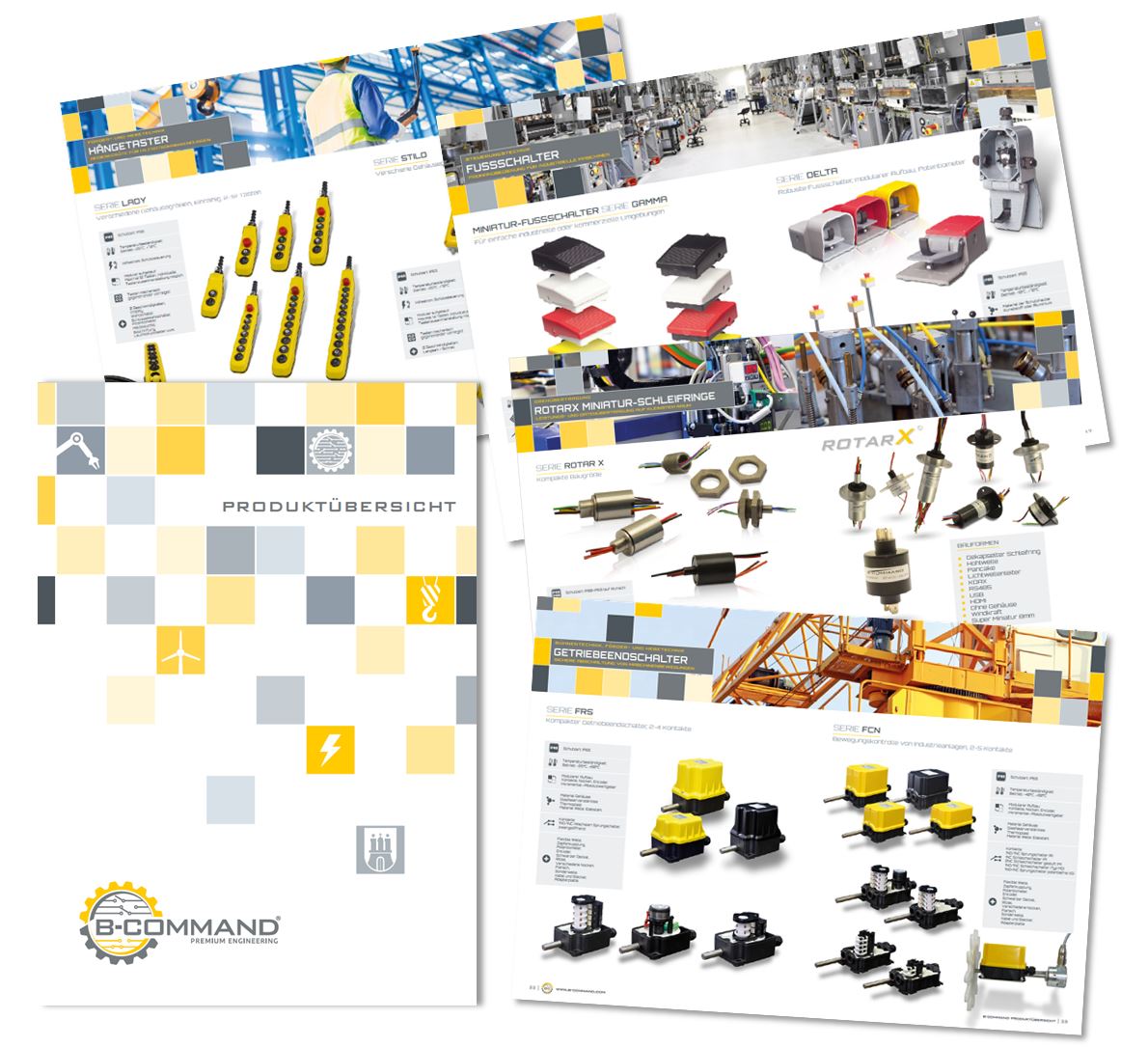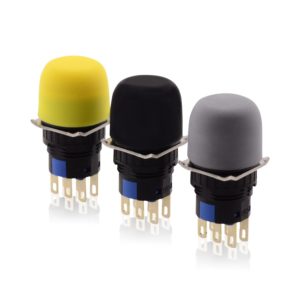Mechanical Specifications
- installation dimension of Ø16mm
- protective caps rubber: yellow, black, grey (silicone-free)
- protection class: IP65 (front side)
- operating temperature: -25°C…+60°C
Electrical Specifications
- 3 positions (OFF – ON – OFF)
- redundant working contacts fulfil safety category 4
- 2 working contacts

Catalogue Download
Find out more about the general features and technical specifications of the Enabling Switches ZA5 in our current product catalogue. The Enabling Switches ZA5 can be individually adapted to offer added value for machine safety. Premium engineering – that is our claim for every single Enabling Switches ZA5. We would like to convince you of this.

2D-Drawing
3-step enabling switch series ZA5
The B-COMMAND enabling switch ZA5 is a three-step (Off-On-Off) enabling switch, which is ideally suited for installation in input devices, such as our Pendant Station Lady. The enabling switch ZA5 has a mounting diameter of Ø16mm. It is mounted by means of a locknut, which also ensures the anti-twist protection.
The 2 working contacts are change-over contacts, which offer the customer several possibilities of wiring. The redundant contact configuration fulfils safety category 4.
For optimum operating comfort, the actuating force from position 2 to 3 is absolutely identical for both centric and eccentric pressure.
The B-COMMAND enabling switches ZA5 are available with or without rubber cap. Besides the standard color yellow, we can also supply the enabling switch ZA5 with a grey or black rubber cap. For automotive applications our rubber caps for enabling switches are also available in silicone-free material.
If you have any questions about our enabling switch ZA5, we are always available by phone, e-mail or live chat.
The functionality of our enabling switches is 3-step or based on 3 positions. The working contacts are actuated in the middle position. For this purpose we have implemented a clearly perceptible pressure point on the design side. In case of panic action / injury the operator would either press firmly (3rd stage) or release the handle (1st stage). Both times the working contacts would be deactivated and thus the system would be stopped. The 2nd stage must therefore be actively operated and held. It is mainly used when setting up or maintaining machines or robots within danger zones.








